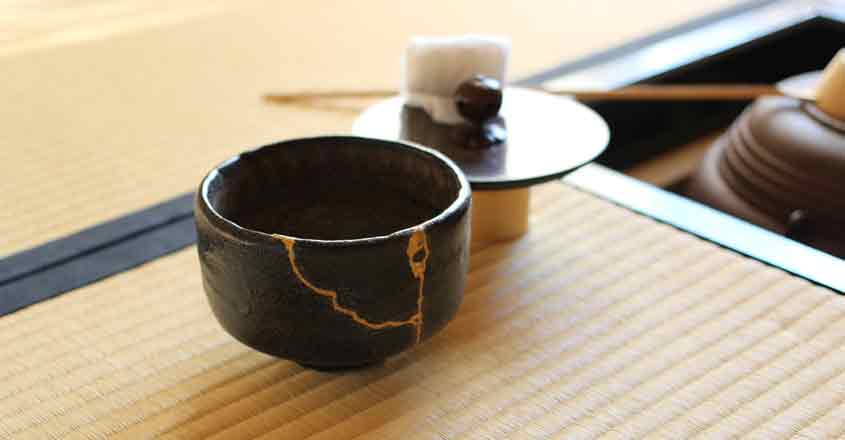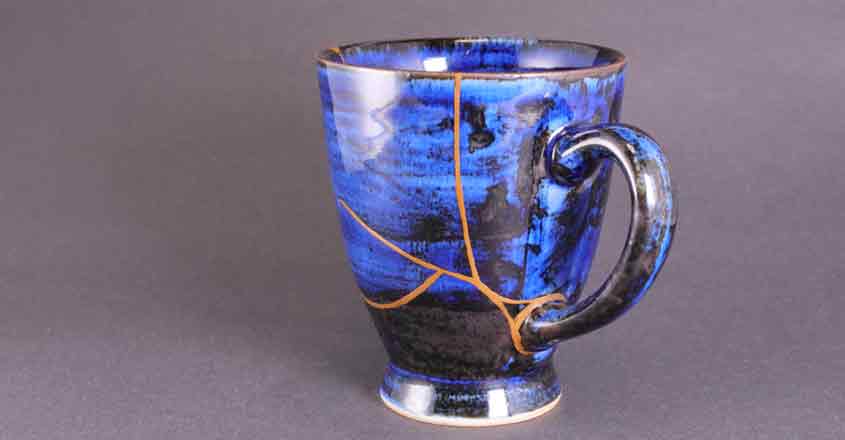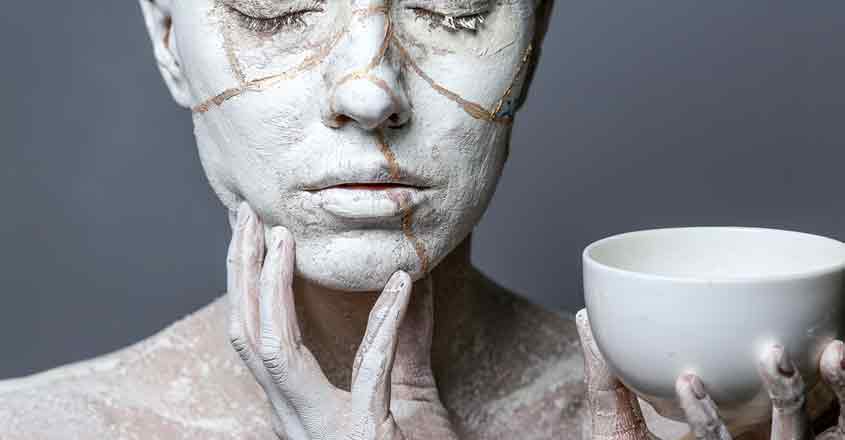The Japanese art of Kintsugi and its must-know philosophy

Mail This Article
When an object of common use, like a cup or saucer, cracks or catches stain it is discarded at once without a second thought. As a matter of fact, there no reason to think otherwise. Unless there is a personal affinity no one would preserve the broken pieces of a ceramic. To a certain extent this is the reflection of the pulse of society. Generally, only what's worth having is valued and kept and even a slight variation in the dimensions of an object from the normal standards is considered a flaw.
Running contrary to this idea is the Japanese art of Kintsugi which refers to a process by which broken ceramics are fixed using a mix of lacquer, powdered gold, silver or platinum. This results in a design of intricate veins which run around the repaired object. These irregular lines are not seen as flaws but are as a beauty element.
The art of Kintsugi, which literally means 'golden joinery', is thought to have begun sometime in the 15th century in Japan as craftsmen tried to find a method of repairing ceramics that would produce aesthetically pleasing creations.

Kintsugi's significance is not limited to the field of restoring broken ceramics, it's a thought-provoking notion that can be applied to our lives. For example, Kintsugi is related to the Japanese philosophy of wabi-sabi which states the importance of embracing imperfections in our lives.
The most immediate lesson that can be learned from Kintsugi is that we need to think carefully before designating something as useless. All resources are valuable and should therefore be treated accordingly. It also encourages us to live humbly and eliminate our tendency to focus on materialism.

Kintsugi teaches us to celebrate imperfections and that as human beings, imperfections are inevitable, whether in appearance, character or actions. Learning to accept our flaws is a process that will lead to a deeper sense of peace and fulfilment.
The art shows us the need to widen our perspective in order to look for opportunities for improvement. It directs us to respect the inherent value in people and appreciate the potential that they carry. Kintsugi fosters the idea that a broken object can be repaired and be made useful once again. It tells us we can always begin anew despite the past failures.

Accepting imperfections helps us to break free from the obsession of perfectionism which causes unnecessary stress and inhibiting creativity and productivity. The philosophy of Kintsugi art has the potential to improve life in the modern society. All we need to do is identify the areas where it can be effectively applied.

